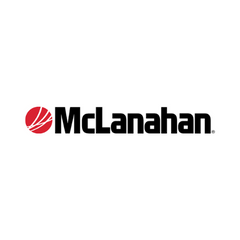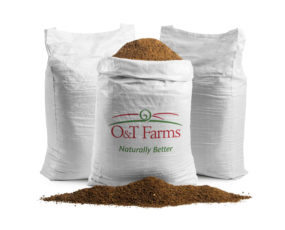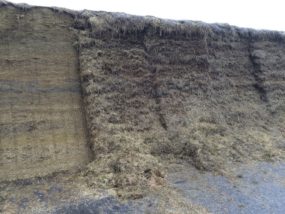A power ventilation system is an essential part of maintaining a healthy and productive environment for your livestock. It consists of three critical components: exhaust fans, fresh air intakes and the control system. Each of these elements plays a vital role in regulating the airflow and temperature inside your barn or facility.
As spring approaches, and before the system is required to operate at full capacity, it is a best practice to thoroughly inspect all equipment to ensure it is functioning at peak efficiency. This proactive approach can prevent expensive repairs, extend the life of your system and ensure your livestock remain comfortable during the warmer months.
Damaged exhaust fan blades can cause imbalances, leading to vibration that may harm the motor and potentially result in breakage, creating a hazardous situation and possibly damaging the fan housing. Similarly, if the louvres on your fans are dirty or not moving freely, they can restrict airflow out of the barn. This not only reduces air exchange but also limits airflow over the motor, causing it to overheat and potentially burn out.
On the intake side, ensure that the designed airflow capacity of your system is still being met. Any restrictions can increase static pressure in the room, reducing system efficiency and causing higher intake air velocity, which disrupts the air pattern. If your system includes automatic inlet adjustments, these need to operate freely to allow the control system to position the inlets correctly for optimal temperature regulation in the barn.
The controller serves as the brain of your power ventilation system, making adjustments based on programmed instructions. Most systems use “result-oriented programming,” meaning you input the desired outcome – such as room temperature – and the controller regulates intake and exhaust to achieve it. This process considers factors like the heat generated by your animals and the temperature of incoming air. Some systems also include an outdoor temperature sensor, enabling the controller to adjust its response based on seasonal conditions. In hot weather, the controller may also manage additional equipment, such as circulating fans or heat-stress reduction systems, ensuring they operate at the appropriate temperatures.
With warmer weather placing added stress on your ventilation system, it is important to prepare by reviewing, adjusting or replacing key components. Below are some specific areas to focus on as your system ramps up to maximum capacity.
Exhaust fans
Inspect all fan blades for nicks or cracks and clean off any debris. Damaged blades should be replaced immediately, as they can break or rotate off balance, potentially damaging the motor. Clean the louvres thoroughly to remove dust and dirt that could restrict airflow. Manually open and close the louvres to ensure they operate smoothly and are not sticking in the open or closed position. This is also the ideal time to remove, clean and store your winter covers.
For belt-driven fans, check for wear and stretch on the belts, as slipping on the pulley reduces fan capacity and energy efficiency. If your fans are equipped with a belt tensioner, check for a grease fitting on the tensioner wheel and lubricate it as needed.
Finally, perform a general inspection of electrical connections to ensure all are secure and that there are no exposed wires, which could pose a fire hazard.
Circulating fans
In addition to the exhaust fans, check any interior fans used for supplemental hot-weather ventilation. Inspect their blades for damage and check fan belts for wear and tension. Ensure that all fan guards are secure, and inspect the mounts attaching the fans to the building or posts to confirm that no fasteners have come loose.
Fresh air intakes
Inspect all inlet openings to ensure there are no obstructions blocking airflow into your facility. These areas tend to be prime locations for bird nests in the spring. Check the bird screen for any damage, and verify that it is properly fastened. Inside the barn, ensure the adjustment baffle or panel is functioning correctly. I recommend running the inlet from fully open to fully closed while watching for any frayed cables, broken pulleys or loose cable clamps.
If your inlets are powered by electric drives, this is also a good time to lubricate any gearboxes as required. Finally, as with your fans, conduct an inspection of all wiring connections to ensure they are secure.
Ventilation controller
Most ventilation control systems have programmed settings that should be reviewed and, in some cases, adjusted to reflect seasonal changes. If your controller uses different parameters for winter and summer, spring is the time to adjust the settings for warm-weather operation.
Inspect the temperature sensors inside your building to ensure they are free from dust and dirt that could distort their readings. Additionally, check any other sensors, such as ammonia or humidity sensors, and clean them as needed.
If you have an independent alarm system, this is also the time to replace any backup batteries and test the system to confirm the settings and dial-out phone numbers.
Spring can be a busy time for farm operations, so if time is limited, consider contacting your local ventilation equipment supplier to arrange a service visit. They can ensure your equipment is operating at peak efficiency, helping to prevent costly repairs down the road. Regular maintenance not only boosts system performance but also extends the lifespan of your equipment, ensuring reliable operation through the warmer months.
A little proactive attention now will go a long way in maintaining a comfortable and healthy environment for your livestock, ultimately protecting your bottom line.











